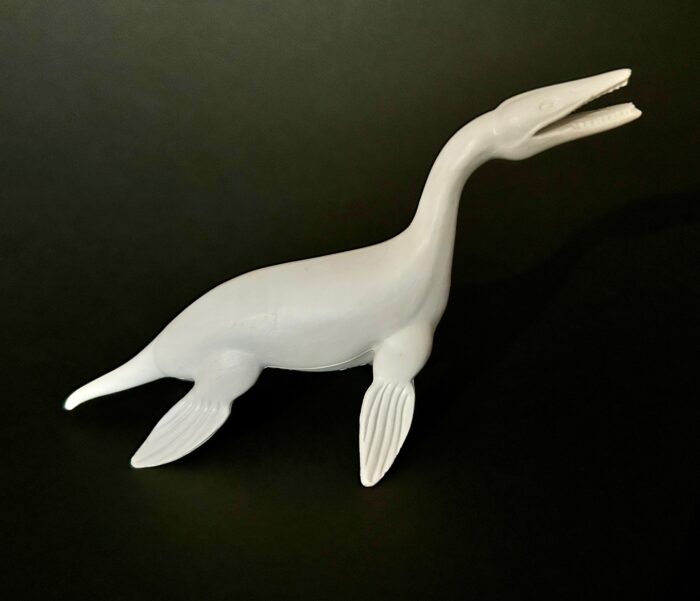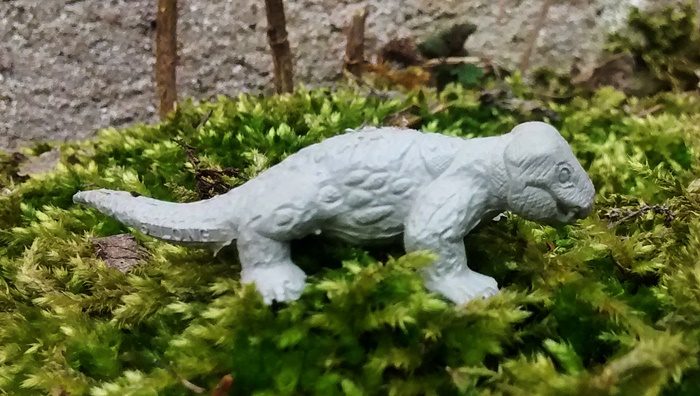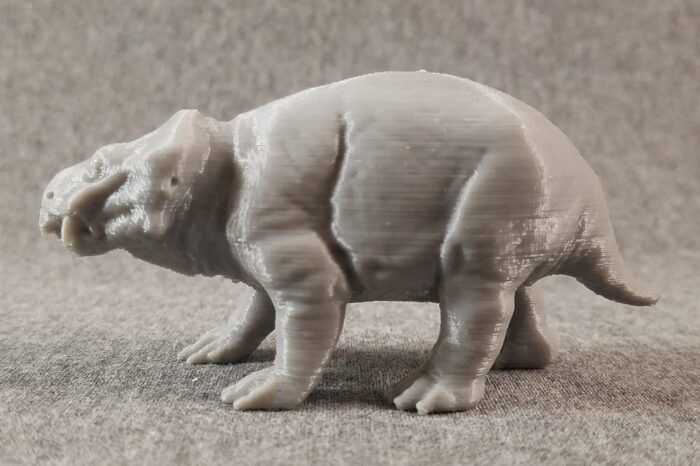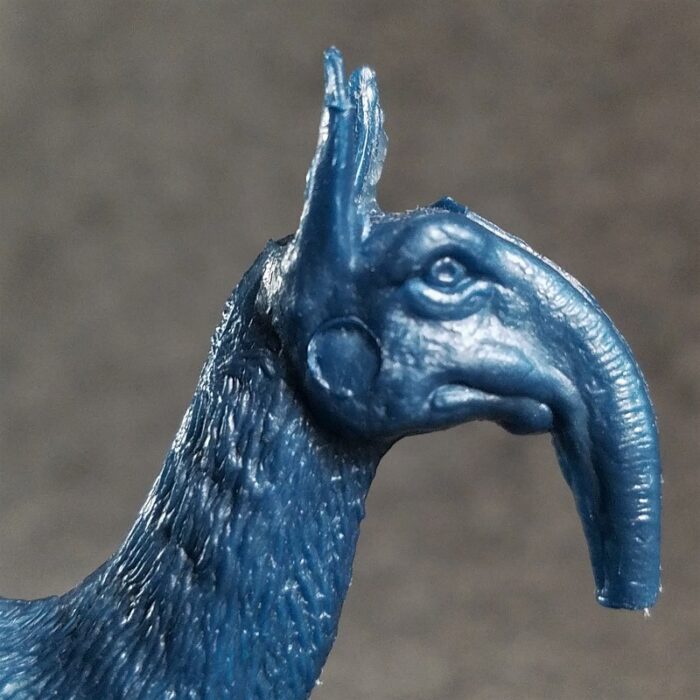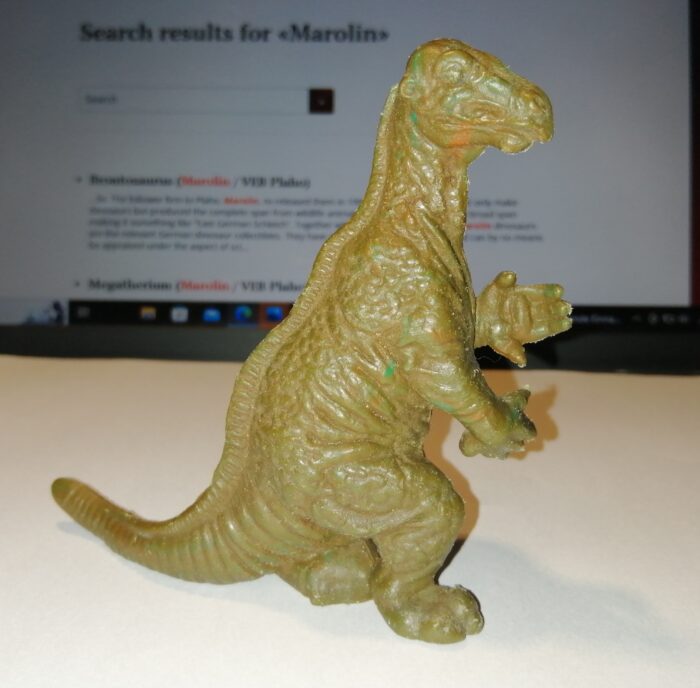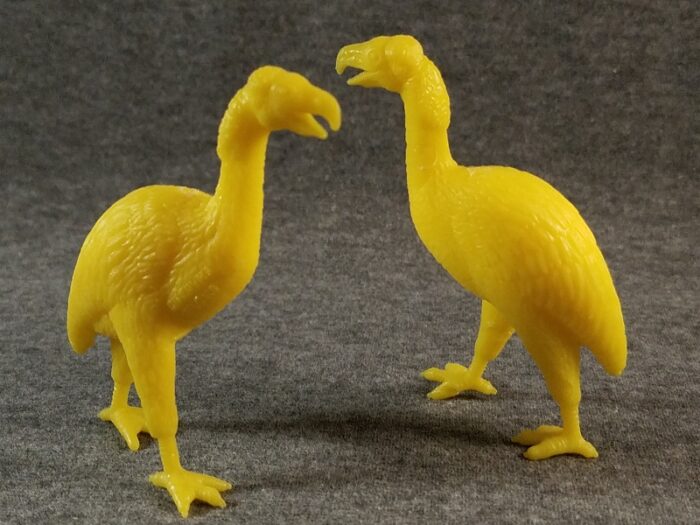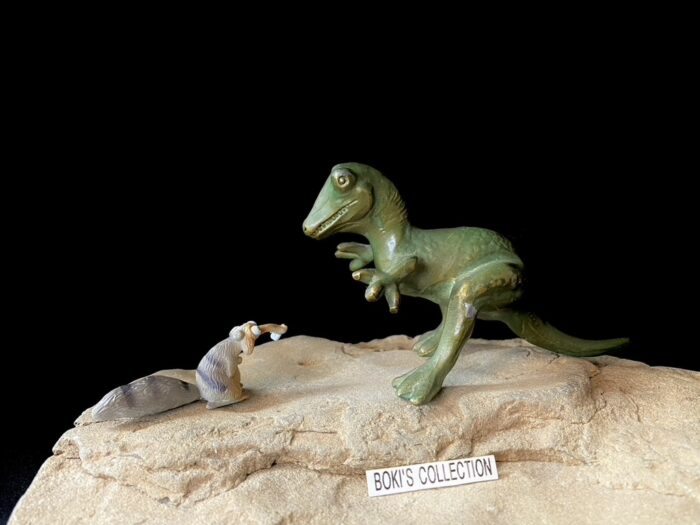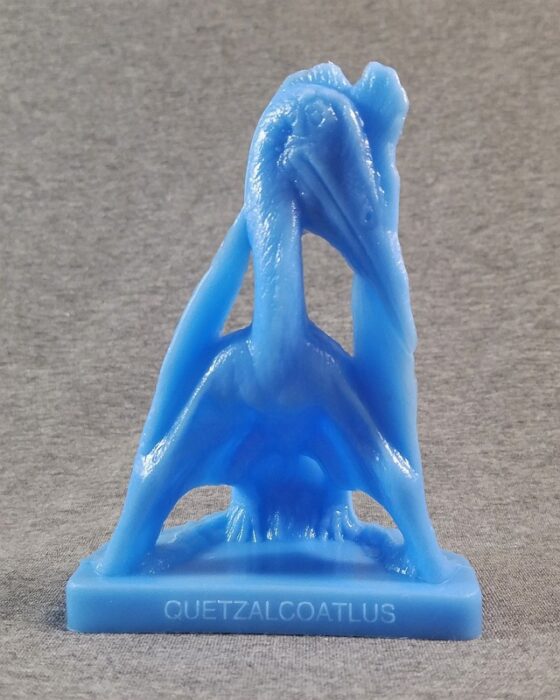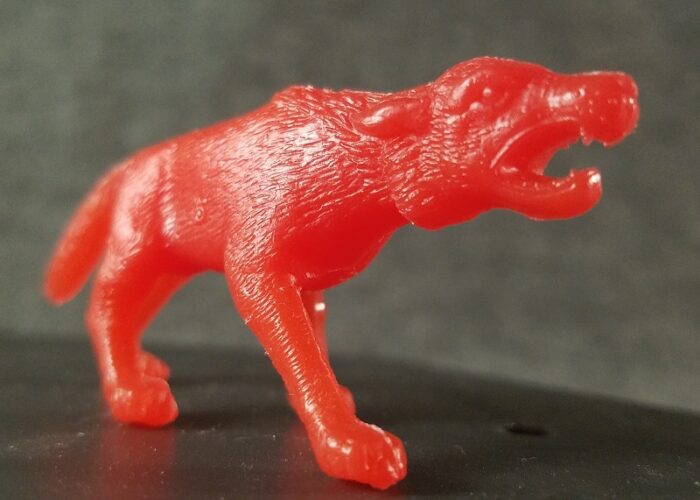Review and photos by BlueKrono, edited by DinoToyBlog
If I were asked to pick a favorite dinosaur toy it would be a challenging query, but I think the one I’d settle on would be the Marx Kronosaurus. A relic of Marx’s early dinosaur lines, the swan-necked prehistoric reptile has a history going back almost a century.

